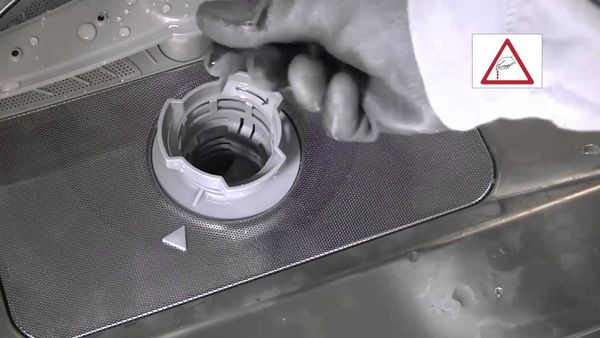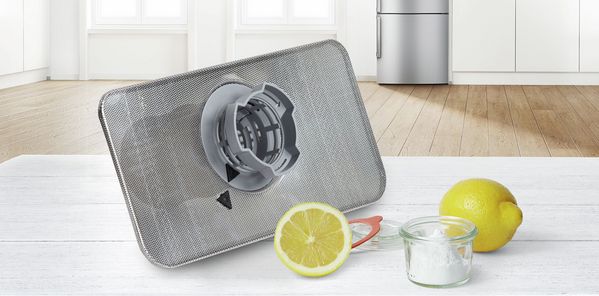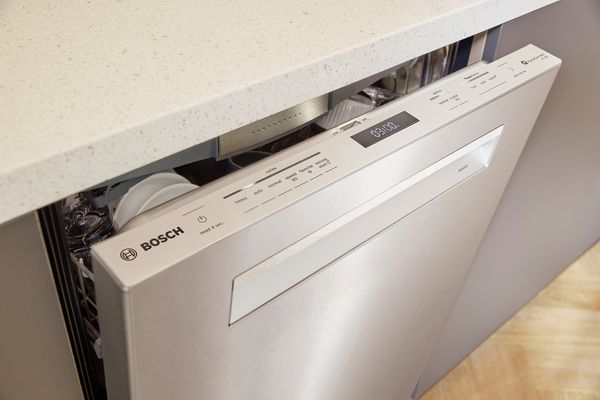I have cleaned more dishwashers than I have eaten dinners, and yes, I still love both. If you are asking how do I clean my Bosch dishwasher, you are in the right place. I will show you what to clean, how often, and the exact steps that keep your Bosch quiet, fresh, and fast. I use these steps at home and with clients. They are safe, simple, and based on manufacturer best practices, plus a few friendly tricks I learned the hard way.

Source: www.spencerstv.com
Contents
- What You Will Clean And How Often
- Step 1: Prep And Safety
- Step 2: Clean The Filter And Drain Area
- Step 3: Clean The Spray Arms And Nozzles
- Step 4: Wipe The Door Gasket, Edges, And Racks
- Step 5: Run A Deep-Clean Cycle
- Step 6: Descale For Hard Water
- Step 7: Deodorize Without Damage
- Step 8: Keep It Fresh: Weekly And Monthly Routine
- Troubleshooting Gunk, Odor, And Cloudy Glass
- Frequently Asked Questions
- Wrap-Up And Next Steps
- Watch This Video on how do i clean my bosch dishwasher
What You Will Clean And How Often
Your Bosch is a small washing machine with a few key parts. Each one needs love on a schedule. Here is the quick plan.
- After every few cycles: Wipe the door edges and check the filter for food.
- Every week: Clean the filter, drain area, and gasket.
- Every month: Rinse spray arms, run a cleaner cycle, and wipe racks.
- Every 3 months: Descale if you have hard water or cloudy glass.
- Anytime it smells: Deodorize the right way, not with harsh tricks.
This plan prevents odor, spots, and slow draining. It also keeps your pump and heater happy.

Source: www.bosch-home.com.au
Step 1: Prep And Safety
A clean start makes a clean finish. Take one minute to set this up.
- Empty the dishwasher. Remove any big food bits.
- Turn off the machine. Open the door fully.
- Gather supplies. You need a soft brush, a toothbrush, a microfiber cloth, warm soapy water, white vinegar, baking soda, a non-scratch sponge, and a dishwasher cleaner or descaler made for dishwashers.
Tip from my kitchen: Use a shallow bowl for small parts. They love to hide.

Source: www.bosch-home.com
Step 2: Clean The Filter And Drain Area
This is the heart of the job. A clogged filter causes odor and slow wash.
- Pull out the lower rack.
- Twist and lift the filter assembly. Bosch filters usually have a fine mesh plus a coarse screen.
- Rinse the filters under warm water. Use a soft brush. No metal brushes.
- Soak stuck grease in warm soapy water for 10 minutes.
- Check the drain well for glass, seeds, or pasta confetti. Remove debris by hand.
- Reinstall the filter. Make sure it locks flat and snug.
Real-life lesson: If the filter is not seated right, you may hear a hum and see dirty water pool. Seat it tight.

Source: www.bosch-home.com
Step 3: Clean The Spray Arms And Nozzles
Spray arms push water through tiny holes. Food can clog them.
- Lift off the lower spray arm. Many Bosch arms lift straight up.
- For the upper arm, look for a center nut or clip. Remove as directed.
- Rinse each arm under warm water.
- Use a toothpick to clear clogged holes. Do not enlarge the holes.
- Swish in warm soapy water. Rinse again.
- Reinstall the arms. Spin them by hand. They should move freely.
This restores pressure, which means cleaner dishes and faster dry times.
Step 4: Wipe The Door Gasket, Edges, And Racks
Gunk loves the hidden edges. A quick wipe stops mold and smell.
- Dip a cloth in warm soapy water. Wring it well.
- Wipe the gray door gasket, the hinge edges, and the bottom lip.
- Use a toothbrush for tight corners and the latch area.
- Check racks for sticky residue. Wipe rails and tines.
- If you see rust spots on rack tips, consider rack cap replacements.
I once chased a mystery odor for days. It was under the bottom door lip. A 30-second wipe fixed it.
Step 5: Run A Deep-Clean Cycle
Now we clean the inside walls and lines. Use a product built for dishwashers.
- Place a dishwasher cleaner on the top rack if the label says so.
- Run a hot cycle, like Auto or Heavy, with sanitize if available.
- Do not add dishes or detergent.
If you prefer a gentle DIY option, you can place a cup of white vinegar on the top rack and run a hot cycle. Use this sparingly and not every month, since frequent acid can be harsh on rubber parts over time.
Step 6: Descale For Hard Water
If your glasses look cloudy or you see white film, you likely have hard water.
- Use a dishwasher descaler or citric acid product made for appliances.
- Follow the product directions. Most work best on an empty machine.
- Run a hot cycle.
Bonus: Set your Bosch water hardness in the settings. Use rinse aid. Both reduce spots and build-up.
Step 7: Deodorize Without Damage
Skip bleach and strong chemicals. They can harm stainless parts and seals.
- Use a cup of white vinegar on the top rack, then run a hot quick cycle.
- For a gentle boost, sprinkle two tablespoons of baking soda on the bottom and run a short warm cycle. Do not mix vinegar and baking soda in the same cycle.
- Keep the door ajar for 20 minutes after each wash to vent steam.
This knocks out odors fast and keeps the interior fresh.
Step 8: Keep It Fresh: Weekly And Monthly Routine
A tiny routine saves you from big scrubs later.
Weekly
- Empty the filter. Wipe the gasket and door edges.
- Spin the spray arms by hand to confirm they move.
Monthly
- Run a dishwasher cleaner on hot.
- Descale if you see white film.
- Refill rinse aid. Check salt if your model uses it.
Every load
- Scrape plates. No need to pre-rinse. Bosch is built for it.
- Load so water can reach every surface. Avoid nesting bowls.
Troubleshooting Gunk, Odor, And Cloudy Glass
If things still look or smell off, try these targeted fixes.
- Dishes still dirty: Check filter seating. Clear spray arm holes. Use the right detergent amount. Avoid tablets in very short cycles.
- Bad odor: Clean the drain well. Run a vinegar cycle. Wipe the bottom door lip and gasket folds.
- Water not draining: Look for blockages in the filter well. Ensure the drain hose is not kinked. Run a drain-only program if your model has it.
- Cloudy glass: Use rinse aid. Reduce detergent. Descale. Choose a longer, hotter cycle for heavy loads.
- Foam in tub: Too much detergent or hand soap got in. Run a rinse cycle with cold water to calm bubbles.
If issues persist, check your user manual for part names and diagrams. It is surprisingly helpful.
Frequently Asked Questions
How often should I clean the Bosch dishwasher filter?
Check it weekly if you cook often. If you run small loads, every two weeks is fine. Clean it sooner if you see debris or smell odor.
Can I use vinegar to clean my Bosch dishwasher?
Yes, in moderation. Use one cup on the top rack and run hot. Do not use it every month. Overuse of acids can stress rubber parts. A dishwasher cleaner made for appliances is safer for regular use.
What is the best way to remove hard water scale?
Use a dishwasher descaler or citric acid product. Run it on an empty, hot cycle. Also set your water hardness and use rinse aid.
Why do my dishes still have food on them?
The filter may be clogged or not seated. The spray arms could be blocked. You may be overloading or nesting. Fix these first, then try a hotter cycle.
Is bleach safe in a Bosch dishwasher?
No. Avoid bleach or harsh chemicals. They can damage stainless steel and seals. Use dishwasher-safe cleaners only.
Do I need to pre-rinse dishes?
No. Scrape big bits, but do not pre-rinse. Modern Bosch models detect soil and adjust the cycle. Pre-rinsing can even reduce cleaning power.
What cycle should I use for a deep clean?
Use Auto or Heavy with sanitize if your model has it. Run the cycle empty with a cleaner on the top rack as directed.
Wrap-Up And Next Steps
You asked how do I clean my Bosch dishwasher, and now you have the full plan. Clean the filter and spray arms. Wipe the gasket and edges. Run a cleaner or light vinegar cycle. Descale if needed. Keep a quick weekly habit, and your Bosch will run like it is new.
Do one small step today. Pull the filter and give it a quick rinse. You will see results on your very next load.
Want more tips or product picks? Subscribe, leave a comment with your model number, or ask a question. I am happy to help you get pro-level results at home.

